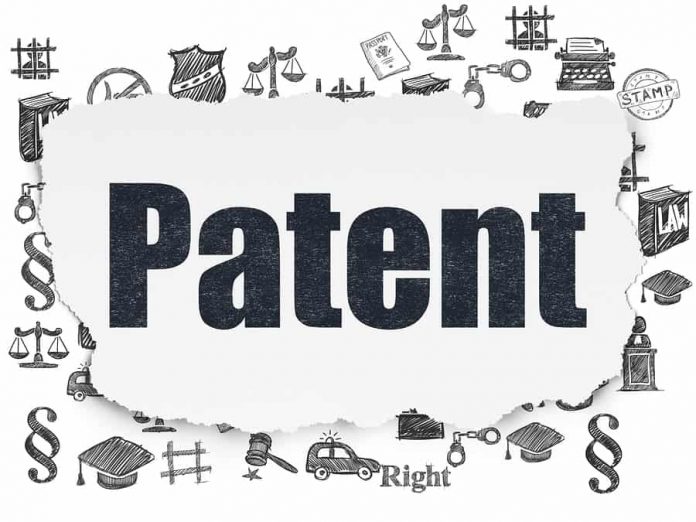This article has been written by Shreya Kasale.
It has been published by Rachit Garg.
Table of Contents
Introduction
In today’s technologically advanced culture, Intellectual Property has always played a crucial role. The lengthy process of granting a patent involves several reviews of the invention’s novelty, non-obviousness, and industrial viability.
A government-issued patent gives an inventor the exclusive right to produce, make use of, and sell his invention. This exclusive right is granted for a brief 20 years window starting on the filing date. The main goal is to preserve developed inventions and so promote further advancements.
Patent filing in India
Intellectual property attorneys frequently struggle with the question of whether to submit a patent application as soon as feasible or to wait and gather more evidence. Anticipatory prior art can be avoided by filing an application “early”, however, if the application is filed too early, the applicant runs the risk of having it rejected during the examination due to a lack of supporting documentation.
It is a race to obtain the earliest priority date when filing for a patent. As a result, patent applications are frequently submitted with supporting information that does not necessarily fully describe the invention.
In India, a person must either be the “genuine and first inventor” of the invention or an assignee, legal agent, or successor in order to be qualified to submit a patent application. According to Section 6 of the Patents Act of 1970, there is an eligibility requirement for those who submit a patent application in India.
According to Section 6 of the Patents Act of 1970, a patent application may be submitted by the true and original inventor, his assignee, both alone or together with any other person.
Documents required while filing patent
The material and documentation needed to submit a national phase or convention application are listed below:
- Complete Specification
- Drawing
- Name, address and nationality of inventors
- Name, address and nationality of applicants
- Power of attorney
- Assignment Deed or Application Form
- Details of corresponding applications filed in other countries
- Verified English translation of the Priority Application
- Verified English translation of the PCT application
- Certified copy of the priority application if requested by the Controller
- Sequence listing in computer-readable text format
Depending on the information provided by the applicant on the invention, a patent application may either contain a provisional specification or a complete specification. When the inventor lacks sufficient knowledge about the invention and requires more time to gather further experimental data, a provisional specification is used. Regarding sufficient disclosure in a provisional specification, the Intellectual Property Act is silent. A complete specification must be submitted within 12 months following the preliminary specification’s filing date, according to the Indian Patent Office. Within a year, this best practice may be modified. Provisional specifications are submitted to obstruct a prior priority date.
Disclosure in specification
The different conditions to be satisfied in terms of sufficient disclosure in the event of a comprehensive specification are provided by a combined interpretation of Section 10 of the Act and Rule 13 of the Patent Rules, 2003. According to Section 10(4) of the Act,
The complete specifications shall-
To claim protection for an invention, a document must:
- Fully and particularly describe the invention, its operation or use, and the method by which it is to be performed;
- Disclose the best method of performing the invention that the applicant is aware of;
- End with a claim or claims defining the scope of the invention; and
- Be accompanied by an abstract that provides technical information on the invention.
It is difficult to add fresh or extra details once a full specification has been submitted to the IPO. After filing, only a limited number of minor typographical mistakes or revisions (within the bounds of the original disclosure) may be remedied by submitting a request to the IPO using Form 13 and paying the applicable costs. As a result, it is important to include every piece of the necessary information in the comprehensive specification at the time of filing. The Patent Examiner/Controller of the IPO has two options if the information supplied in the patent specification is insufficient: they can object to or reject the patent’s issuance.
Data generated after filing may nevertheless be provided during prosecution where it is not feasible to incorporate all significant data at filing.
Post-filing data
Data obtained after the application has been filed can be utilised to demonstrate creative steps (non-obviousness), for instance, unanticipated outcomes, commercial success, or lengthy but unmet requirements. The applicant must demonstrate a connection between the evidence of non-obviousness and the claimed invention in order for it to be taken into account as an “inventive step.” Cases are discussed below where the Court has spoken about “inventive step”.
Case laws
In two instances, the issue of using post-filing data to demonstrate inventive steps was specifically raised at the level of the Intellectual Property Appellate Board (IPAB), and in both instances, the IPAB interpreted the Patents Act, 1970 to prohibit the use of such data to demonstrate inventive step. A patent is cancelled if the invention is proved to be apparent, according to the Patents Act of 1970, and this decision cannot be changed by relying on any additional considerations, the IPAB decided after reviewing the submissions in support of post-filing data.
In AstraZeneca AB & Anr. v. Intas Pharmaceutical Ltd., AstraZeneca possessed Patent ‘147, which was issued on March 15, 2007, and had a priority date of October 12, 1999, as the genus patent. The specie patent, Patent ‘625, has a priority date of 20.05.2002 and was issued on July 9, 2009. While Patent ‘147 expired on February 2, 2020, Patent ‘625 is still in effect as of May 15, 2023.
AstraZeneca filed a lawsuit seeking a permanent injunction against the manufacture and sale of any medications containing the substance DAPA because the Defendant firms wanted to produce and market medications containing the molecule.
In addition, the terminal disclosure submitted by AstraZeneca in the USPTO was evidence of admission that DAPA was protected by the genus patent owned by them, in the US. The defendants fought the lawsuit on the grounds that the patent lacked inventive steps.
Further, the Delhi High Court provided advice on the admissibility of post-filing data in support of innovative steps while debating whether to grant an interim injunction while the matter was awaiting trial. The Court made the initial observation that post-priority date evidence provided by plaintiffs via an affidavit to establish technological advances can only be taken into consideration to confirm the existence of technical effects stated in the specification of the patent that is capable of being understood by a skilled person having common general knowledge. This observation was made in accordance with the precedent of Generics (UK) Ltd. v. Yeda Research & Development Co. Ltd., (2017) EWHC 2629 (Pat) (U.K.), which was relied upon by the Defendants to dispute the validity of the patent-in-suit for lack of inventive step. According to the Court, this evidence cannot be used to demonstrate this effect’s first-time use. The Single Judge noted that the plaintiffs had not been able to establish, at least in the interim, that such a technical impact existed in the specification. The plaintiffs’ claim that the examiner should have been aware of the inventive step issue, or, that the Court might still be presented with technical advance evidence at this point fails to take into consideration the clear language of Section 64(1)(f) read with Section 2(1)(ja) of the Patents Act, 1970 (India). The court noted that the defendants are allowed to argue that there was no demonstrable technical development as of the patent’s priority date in support of their objection.
In the IPAB case, it was determined that the extra evidence, together with the data in the specification, was sufficient to disprove the hearing objections, reversing the Controller’s decision to deny the application. The Delhi High Court declined to accept the new information in the latter instance as evidence of an “inventive step,” noting the absence of such information in the original specification.
When deciding whether to accept the post-filing data, an IPO examiner normally takes into account whether there is a connection between the data revealed in the as-filed application and the post-filing data. If the post-filing data are significantly different from the disclosure made in the specification, or if there is a gap or lack of a connection between the data and the disclosure in the specification, the examiner will probably decline to analyse the post-filing data. It is possible to convince the patent office to accept the said data if the data is to show the accuracy of the disclosure made in the specification and thereby establish that the results indicated therein were unexpected and not taken into account in the prior art references cited by the patent office.
One contentious alternative for filing as soon as possible to avoid losing exclusivity is to disclose experimental data after the application has been published, either during the examination stage or throughout the opposition process. This alternative, however, is not available in all jurisdictions, and it is vital to bear this in mind while seeking international protection.
This choice, for example, is quite limited in China. Post-application data filing is permitted in the United States, Japan, Korea, and Canada under specific conditions. In other words, the criteria vary per jurisdiction.
When all relevant material cannot be included at the time of filing, data generated after filing may nevertheless be provided during prosecution. Examiners are more ready to accept post-filing data when the inventive step of the claims is considered rather than the adequacy of disclosure (written description and enablement). Balancing the need to file early to avoid prior anticipatory art with the necessity to file an application with adequate support to prevent rejections necessitates considerable analysis and preparation on the part of a company’s research and development, clinical, and legal teams. Understanding how post-filing data is treated in different countries is critical for developing a comprehensive and efficient worldwide patent strategy.
Conclusion
Recent decisions from the IPAB and Delhi High Court allow reliance on post-filing facts to overcome objections or to present proof of the invention’s superior merits.
Regarding the conditions in which such post-filing material should be taken into consideration, there is still some ambiguity. Such information often has to fall within the claimants’ purview. In the best-case scenario, applicants are urged to reveal at least some technical impact data, experimental efficacy data, and/or comparable examples in the specification. The specification should be written so that the technical impact may be deduced from the disclosure even in the absence of such experimental evidence at the time the specification is filed.
Moreover, striking a balance between filing the patent application as quickly as feasible and including all possible evidence to establish the inventive step required to secure the award is difficult.
In either event, it is critical to tell the patent attorney in charge of preparing the application of all conceivable technological consequences (proved or not) of an invention, even if proof supporting them has not yet been received. This will have a significant impact on obtaining optimum worldwide protection for innovation.
Reference
- https://economictimes.indiatimes.com/news/how-to/how-to-go-about-patent-filing-in-india-all-you-need-to-know/articleshow/86417211.cms
- https://www.mondaq.com/india/patent/1028342/filing-data-after-applying-for-an-indian-patent-drafting-and-practice-insights#:~:text=The%20short%20answer%20to%20this,is%20accepted%20at%20the%20IPO.
- https://www.managingip.com/article/2a5czxnmoh736hztd14w0/too-much-information-or-not-quite-enough-experimental-data-in-indian-patent-applications
- https://www.intepat.com/blog/patent/objections-under-section-462-of-the-indian-patents-act-1970/
- https://www.lexcampus.in/astrazeneca-ab-ors-v-intas-pharmaceuticals-ltd-ors/
- https://suranaandsurana.com/2021/11/02/a-case-study-on-double-patenting-astrazeneca-ab-anr-vs-intas-pharmaceuticals-limited/
Students of Lawsikho courses regularly produce writing assignments and work on practical exercises as a part of their coursework and develop themselves in real-life practical skills.
LawSikho has created a telegram group for exchanging legal knowledge, referrals, and various opportunities. You can click on this link and join:
Follow us on Instagram and subscribe to our YouTube channel for more amazing legal content.
 Serato DJ Crack 2025Serato DJ PRO Crack
Serato DJ Crack 2025Serato DJ PRO Crack












 Allow notifications
Allow notifications


